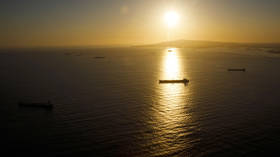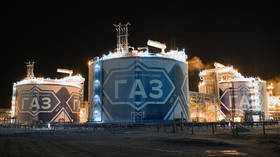Top routes for Russian oil after price cap revealed

India and China have stepped up purchases of Russian Arctic oil grades following Western sanctions on Russian crude, Reuters reported on Thursday, citing traders and vessel-tracking data from Refinitiv. The EU, G7 nations and Australia introduced a price cap on Russian oil late last year, while the EU also placed an embargo on seaborne Russian crude.
According to the report, Indian purchases of Russia’s Arco and Arco/Novy Port grade crude reached a record of 6.67 million barrels in November. Another 4.1 million barrels of those crude grades were supplied to the country in December, along with a 900,000-barrel shipment of Varandey crude, India’s first purchase of the grade. Prior to Western sanctions on Russian energy, Arctic grades were usually supplied to European countries.
A source cited at an Indian refiner stated gross product margins from the processing of Russian Arctic crude grades are over $10 a barrel higher against similar quality US oil. Along with steep discounts sellers offer for Russian shipments, this makes Russian oil increasingly attractive to buyers, analysts say.
Prior to the crisis in Ukraine, India, the second-biggest oil consumer in Asia, was a small marginal buyer of Russian crude. However, the situation changed after Western buyers started shunning the fuel due to sanctions, and in November last year, Russia became India’s largest oil supplier.
Data also showed that at least three vessels loaded with some 2.58 million barrels of Arctic crude are currently on their way to China from the Russian port of Murmansk. Like New Delhi, Beijing hasn’t joined Western sanctions against Russian oil, instead boosting Russian crude purchases by 10.2% in January-November last year, to 79.78 million tons. In November, Russia overtook Saudi Arabia as China’s largest crude provider, according to a Chinese customs report issued late last month.
Meanwhile, European purchases of Russian oil have been dwindling. Russia’s seaborne crude exports to European countries fell to 167,000 barrels a day in the 28 days to December 30, from more than 1.5 million barrels a day a year earlier, Bloomberg reported this week, citing vessel tracking data.
For more stories on economy & finance visit RT's business section













